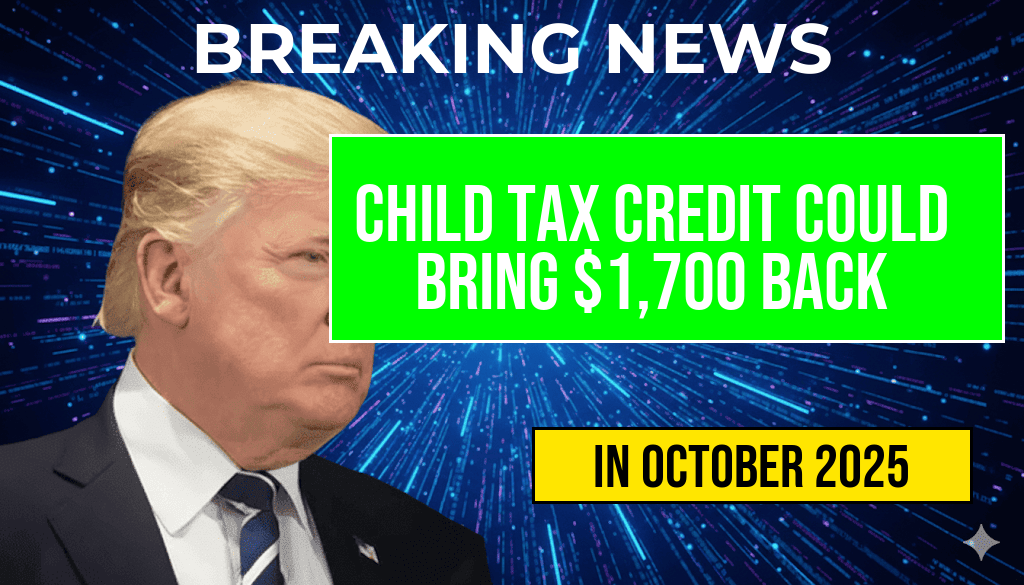The upcoming tax season could bring significant financial relief to many families through the Refundable Child Tax Credit. This program, expanded under recent legislation, allows eligible parents to receive up to $1,700 per qualifying child as a direct refund, even if they owe little or no federal income tax. This change aims to bolster household budgets amid ongoing economic challenges, providing a crucial safety net for low- and moderate-income families. Understanding the eligibility requirements, application process, and potential benefits can help families maximize their refunds and plan accordingly.
Understanding the Refundable Child Tax Credit
The Child Tax Credit (CTC) has traditionally offered tax relief to families with children, reducing their tax liability. However, the recent expansion makes a portion of this credit refundable, meaning families can receive the money as a direct payment regardless of their tax liability. The American Rescue Plan Act, enacted in 2021, temporarily increased and expanded the CTC, and many provisions are now permanent or extended through 2025.
This expansion allows qualifying families to claim up to $1,700 per child aged 6 to 17, with the maximum amount decreasing for younger children. The refundable portion can significantly increase the total refund amount, offering cash flow support during economic uncertainties.
Who Qualifies for the Refundable Child Tax Credit?
Eligibility Criteria
- Families must have a child under age 18 at the end of the tax year.
- The child must be a U.S. citizen, U.S. national, or U.S. resident alien.
- Taxpayers must have a valid Social Security number for themselves and their child.
- Income limits apply; the credit begins to phase out at higher income levels.
- Filing status must be single, married filing jointly, head of household, or qualifying widow(er).
Income Limits and Phase-Outs
| Filing Status | Maximum Income for Full Credit | Income Range for Phase-Out |
|---|---|---|
| Married Filing Jointly | $150,000 | $150,000 – $170,000 |
| Head of Household | $112,500 | $112,500 – $120,000 |
| Single/Married Filing Separately | $75,000 | $75,000 – $80,000 |
Once income exceeds the upper limit, the credit begins to phase out at a rate of $50 for each $1,000 of income over the threshold. Families earning above the phase-out range are ineligible for the credit.
How to Claim the Refundable Child Tax Credit
Filing Requirements
Taxpayers should file their federal return using IRS Form 1040 or 1040-SR. The Child Tax Credit is claimed on Schedule 8812 (Credits for Qualifying Children). For those who do not owe taxes, the refundable portion is paid out as part of the refund process, provided all eligibility criteria are met.
Automatic Calculations and Advance Payments
The IRS automatically calculates the credit based on the information provided in your tax return. Additionally, some families may have received advance payments during 2021 and 2022, which are reconciled on the annual return. It’s advisable to keep documentation of your children’s Social Security numbers and relevant income statements to ensure accurate reporting.
Potential Impact on Family Finances
For families qualifying for the full $1,700 per child, the refund can substantially ease financial burdens related to childcare, education expenses, and daily necessities. For example, a family with two children could see a boost of up to $3,400 in their federal refund, potentially providing a lifeline during tight months.
Budgeting and Planning Tips
- Review your income and household details early to determine eligibility.
- Gather necessary documentation, including Social Security numbers and income statements.
- Consult a tax professional if your situation involves complex income or dependents.
- Use the anticipated refund to address outstanding bills or save for future expenses.
Additional Resources and Updates
The IRS provides comprehensive guidance on the Child Tax Credit and related benefits on its website (irs.gov). Families can also explore eligibility calculators and step-by-step filing instructions to streamline the process. As legislative changes continue, staying informed through official sources ensures maximum benefit realization and compliance.
For more detailed information on the broader scope of federal assistance programs, visit Wikipedia’s Child Tax Credit page or consult financial news outlets like Forbes for updates on policy shifts.
Frequently Asked Questions
What is the Refundable Child Tax Credit?
The Refundable Child Tax Credit is a financial benefit that allows eligible families to receive up to $1,700 back per qualifying child, even if they do not owe taxes. It aims to provide additional support to families with children.
Who is eligible to receive the Refundable Child Tax Credit?
Eligibility depends on factors such as income level, child’s age, and tax filing status. Generally, families with children under age 17 and meeting income requirements can qualify for the credit.
How much can I potentially receive from the Refundable Child Tax Credit?
Families could receive up to $1,700 per qualifying child as a refund. The exact amount depends on income, number of qualifying children, and other factors.
When and how will I receive the Refundable Child Tax Credit?
The credit is typically claimed when you file your taxes. If eligible, the IRS may issue a refund directly to your bank account or mailing address, often as part of your tax refund process.
Can the Refundable Child Tax Credit be combined with other benefits?
Yes, the Refundable Child Tax Credit can often be combined with other tax credits and benefits, such as the Earned Income Tax Credit (EITC), to maximize support for eligible families.





